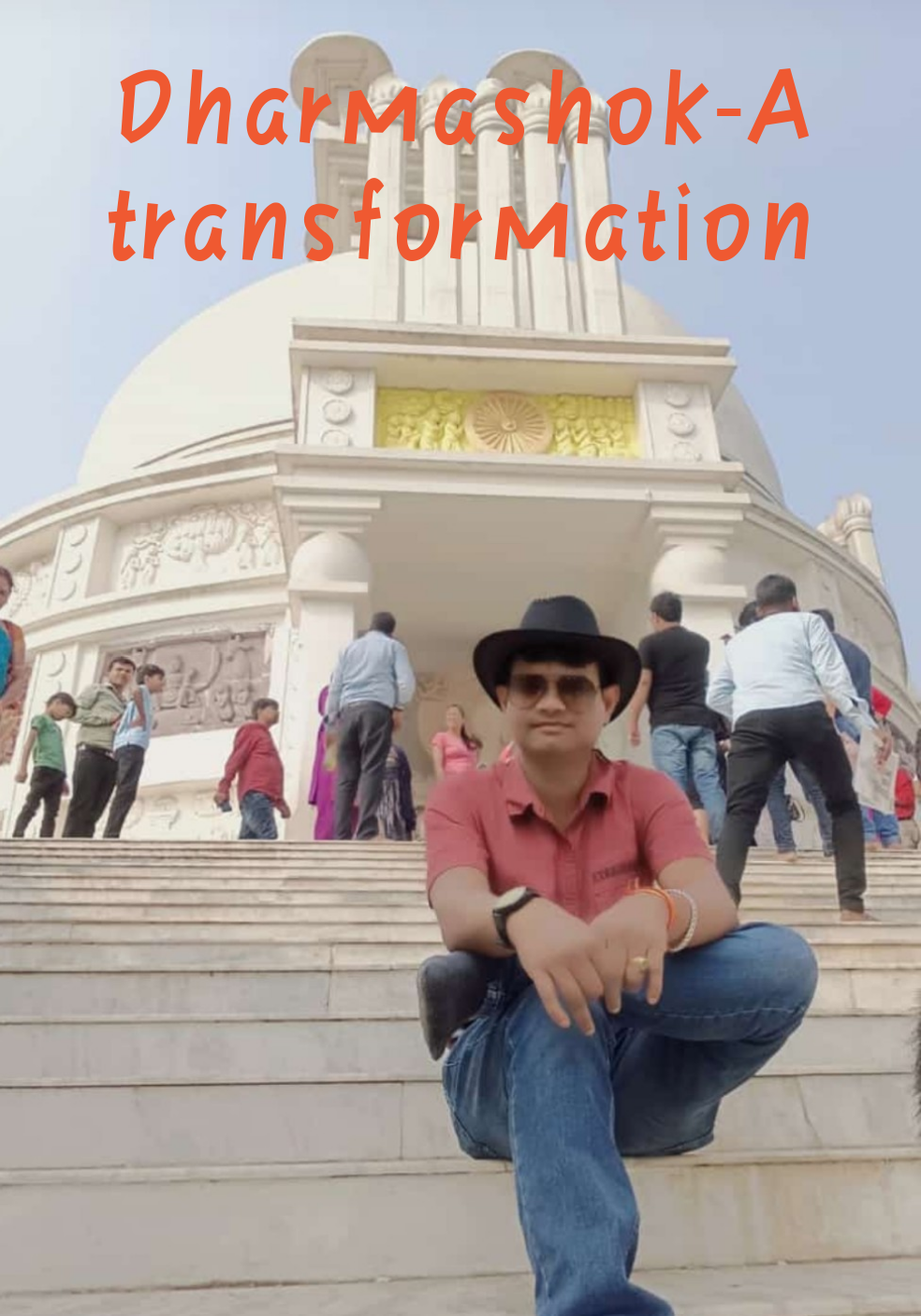Dharmashok-A transformation
Dharmashok-A transformation


The Kalinga War stands as a defining moment in Emperor Ashoka's reign, casting a profound shadow on his earlier ambitions and paving the way for a transformative journey towards enlightenment and benevolent rule.
In the third century BCE, Emperor Ashoka, driven by a relentless pursuit of conquest, led his mighty Mauryan army into the region of Kalinga, situated on the eastern coast of India. The Kalinga people valiantly resisted the invasion, leading to a prolonged and brutal conflict that left a trail of devastation across the land.
The victory that Ashoka sought came at an unimaginable cost. The once-vibrant landscapes of Kalinga were now marred by the ravages of war: cities reduced to rubble, fields stained with blood, and countless lives lost. Witnessing the widespread suffering and desolation, Ashoka was struck by a profound sense of remorse and anguish that pierced through his soul.
The horrors of the battlefield weighed heavily on Ashoka's conscience. The cries of the wounded, the anguish of the bereaved, and the sheer magnitude of human suffering etched themselves deeply into his heart. It was amidst this grim tableau of destruction that Ashoka experienced a profound transformation, a seismic shift in his perspective and ambitions.
Haunted by the carnage he had unleashed, Ashoka turned inward, seeking solace and redemption. In the depths of his soul-searching, he encountered the teachings of Buddhism—a path of compassion, non-violence, and enlightenment. The profound impact of these teachings resonated within him, igniting a fervent desire for atonement and a commitment to a new way of life.
Embracing the principles of Buddhism, Ashoka renounced violence and embarked on a journey towards spiritual awakening. This marked the birth of 'Dharmashoka,' the righteous ruler whose quest for inner peace and societal harmony became the guiding light of his reign.
Driven by remorse and a newfound conviction, Ashoka initiated sweeping reforms across his empire. His transformation from a conqueror to a benevolent ruler was reflected in his policies that emphasized social welfare, religious tolerance, and the propagation of dharma. His reign became synonymous with benevolence, justice, and compassion—a stark departure from the conquest-driven ambitions of his earlier years.
To spread the message of righteousness and compassion, Ashoka commissioned the erection of monumental pillars and inscribed edicts across the empire. These pillars bore inscriptions, articulating his commitment to ethical governance, social welfare, and the welfare of his subjects. Ashoka's edicts, written in various dialects, preached tolerance, non-violence, and the importance of moral conduct, transcending the boundaries of his kingdom and resonating through the annals of history.
Under Ashoka's enlightened rule, a framework of governance emerged that prioritized the well-being of his people. He established hospitals, built roads, and instituted measures to alleviate the suffering of his subjects. His benevolent policies extended to the animal kingdom as well, advocating for the protection and welfare of animals.
The impact of Ashoka's transformation was not confined to the boundaries of his empire alone. His advocacy for peace and righteousness reverberated across distant lands, influencing neighboring kingdoms and fostering an era of harmony and coexistence.
The legacy of Emperor Ashoka, the Dharmashoka, endures as a testament to the power of introspection, compassion, and the pursuit of righteousness. His transformative journey from a remorseful conqueror to a visionary advocate of peace and ethical governance continues to inspire generations, serving as a timeless beacon of hope and enlightenment in the annals of history.




























































